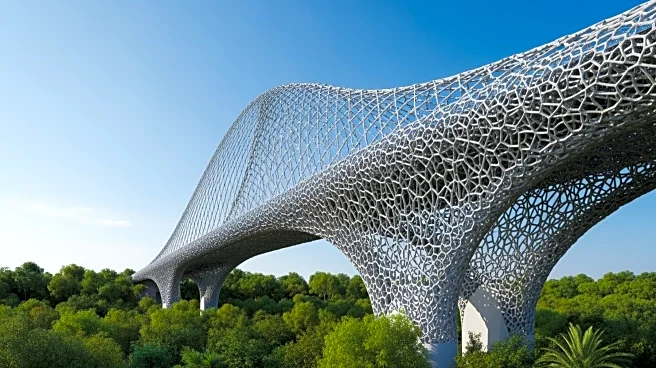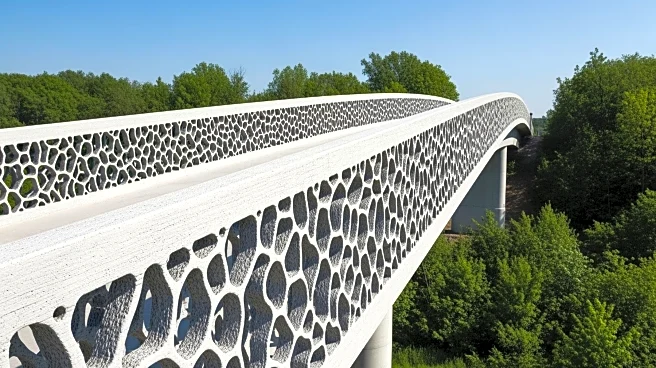What's Happening?
A research team at the University of Pennsylvania has developed a 3D-printed pedestrian bridge that absorbs carbon dioxide, using a sustainable concrete mixture. The project, named Diamanti, utilizes a design
inspired by bone structures to reduce material usage by 60% while maintaining strength. The bridge's concrete mixture absorbs 142% more carbon dioxide than conventional mixes. The project is a collaboration with Swiss chemical company Sika and aims to address the environmental impact of concrete, which is a major contributor to global greenhouse gas emissions.
Why It's Important?
The development of a carbon-absorbing bridge represents a significant advancement in sustainable construction practices. As the construction industry seeks to reduce its carbon footprint, innovations like Diamanti offer a promising solution by combining material efficiency with enhanced carbon absorption. This approach not only addresses environmental concerns but also sets a precedent for future infrastructure projects. The successful implementation of such technologies could lead to widespread adoption, contributing to global efforts to combat climate change.
What's Next?
The Diamanti project is preparing to build its first full-size prototype in France, following successful testing of a smaller version. The team is also exploring other architectural applications, such as prefabricated floor systems. As the project progresses, it will be important to monitor the scalability and cost-effectiveness of the technology, as well as its potential impact on the construction industry's carbon emissions.












